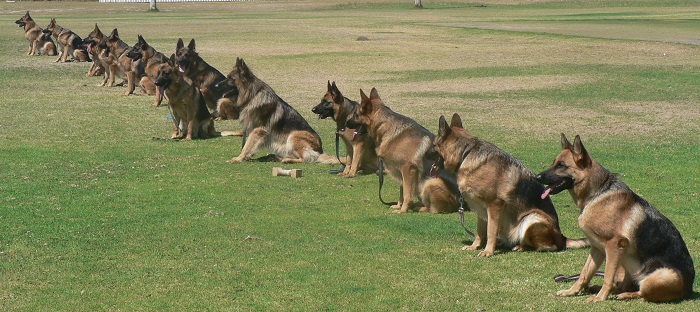
Decades ago, my grandfather was the pharmacist at a downtown Rexall Drug store, but his heart lay in the outdoors. He was well known as an avid fly fisherman, and also helped to establish the first duck hunting club in Utah; the Utah Duck Club. His true passion, however, was in training hunting dogs, a passion that was handed down to me.
I mostly train bird dogs, but I find that the most important thing I can instill in them is not how to hunt, but rather, something all dog owners struggle with: the basics of obedience training. I once witnessed another hunter’s wonderful retriever chase a pheasant onto Redwood Road where a car hit and killed it. Sad indeed! Had the owner been able to control that dog, it might not have died. I think that most dog owners suffer from this inability to control their dogs through commands, especially when it really counts.
I boil dog obedience down to the basic commands of: “no, come, sit, heel, lay down, and stay.” Anyone can train their dogs to these commands if they are consistent, use good techniques, and use the aid of what I call the “carrot-and-the-stick.”
Obedience commands are just that—commands. They generally fall into two categories, the dog’s desire to “really WANT to do something you want it to do” (= carrot), and the dog’s “FEAR of you” (= stick).
I have been exposed to countless dogs that have no respect for the word “NO!” That is where “the stick” comes in. I agree that all dogs are different, and that the owner needs to find the minimum of what it takes to truly instill fear in their dog when the command “no” is used. It is simple. If your dog is running out onto a busy street, is the fear you have instilled in the word “no” strong enough to save the dog’s life or not?
Training a dog with a shock collar can accomplish this fear without actually hurting the dog if used according to the instructions. “Lay down” and “stay” for an hour while their owner leaves their dog in front of a grocery store (in the presence of all manner of distractions) to come back out thirty minutes later and find the dog patiently and obediently waiting for their return are both “fear” commands, and cannot be accomplished with a treat reward.
“Come,” on the other hand, should be a “carrot” command. The dog should WANT to come to you, either because you will reward it with a food treat, opportunity to play, or for some dogs, even a simple pat on the head. “Sit” and “heel” are two more “carrot” commands. Smaller, non-bird dogs are usually much easier to train with the “treat” approach.
You might say, “Oh my dog could never learn to do that!” or “My dog is just too old to learn a new trick.” Oh, how wrong you are. Here are a few helpful tips:

1. Unlike cats, dogs can learn over one hundred words if they are very distinct and separated from other words. Owners often think their dogs can understand complete sentences—no, they can’t! Instead, say the dog’s name to get its attention, hesitate, then say the command.
NOTE: I also use hand commands while saying the verbal ones so that I can get the obedience I want, even if the dog can only see me.
2. NEVER repeat any command that the dog heard or saw you make.
3. If the dog does not complete one of the “fear” commands, immediately make it do so.
4. If it completes one of the “treat” commands, immediately give it a treat.
5. Everyone in the household needs to be completely consistent with whatever the training rules are—no exceptions!
6. Enroll in a dog obedience class. It is not for the dog; it is for the owner!
You CAN teach an old dog new tricks, even if YOU are really the old dog!


